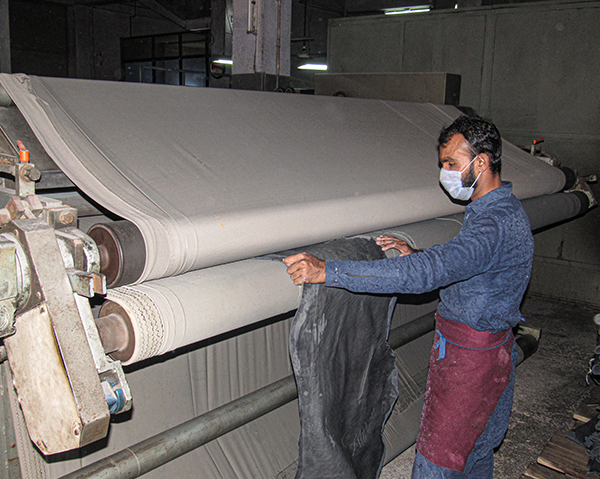Staking is one of the key stages in Iran’s leather industry, carried out with the purpose of softening leather and enhancing its flexibility. This process ensures that leather becomes more comfortable and pleasant to handle, making it ideal for use in products such as leather garments, gloves, soft handbags, and upholstered furniture. Staking is performed using specialized machines that carefully loosen and realign the leather fibers in a controlled manner, without compromising their strength.
In the leather industry, three main types of staking machines are used:
- Vibration Staking: Uses high-frequency vibrations to gently loosen the leather fibers and increase flexibility. This method is ideal for lightweight and thin leathers such as sheepskin or goatskin, which require delicate softening.
- Roller Staking: Passes the leather through rotating rollers that apply uniform pressure, reducing stiffness and improving flexibility. This method is suitable for thicker hides such as cowhide or buffalo, which need strength combined with flexibility.
- Wheel Staking: Involves passing the leather through wheels fitted with fine points that create extremely small, controlled perforations, making the leather softer and more uniform without reducing durability. This method is highly effective for improving uniformity and surface smoothness.
The choice of staking machine and its settings depends on the type of leather, its thickness, and the level of flexibility or softness required. Parameters such as pressure, speed, and vibration intensity are precisely controlled to achieve the best results.
In addition to improving flexibility and softness, staking makes leather easier to work with in subsequent stages such as cutting, stitching, molding, and final finishing. This step enhances both the tactile and visual qualities of leather while also increasing production efficiency.
Key characteristics of the staking process in Iran’s leather industry:
- Use of vibration, roller, or wheel staking machines to achieve desired softness
- Loosening of leather fibers for enhanced flexibility and comfort
- Adjustment of pressure, speed, and frequency according to leather type and characteristics
- Improved texture and surface quality for premium leather products
- Suitable for the production of garments, gloves, furniture upholstery, and other soft leather goods


No comments yet.